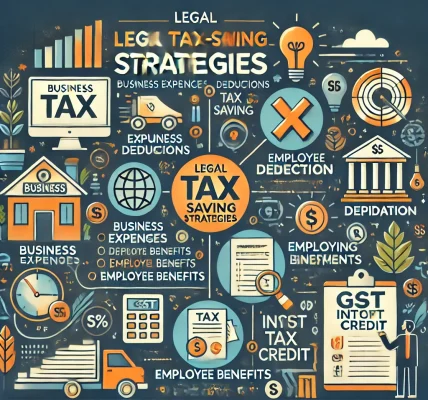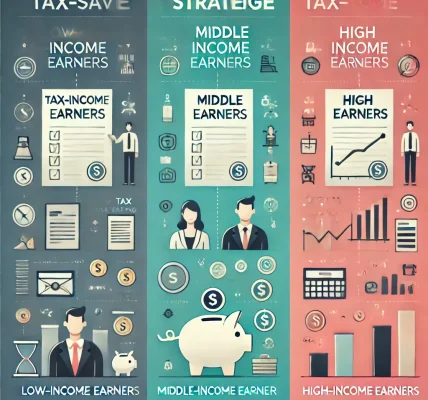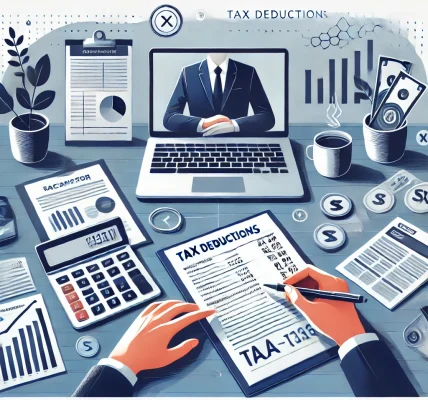Filing taxes for the first time can be a daunting experience. The tax system is complex, and many first-time taxpayers are unsure about how to navigate the process. However, with a little preparation and knowledge, tax season doesn’t have to be stressful. The key to managing your taxes effectively is tax planning.
In this blog, we’ll provide practical tax planning tips for first-time taxpayers to ensure that you minimize your tax liability, avoid mistakes, and make the most of available deductions and credits. Whether you’re a student, a young professional, or someone new to the world of taxes, these tips will help you understand the process and optimize your tax situation.
1. Understand Your Filing Status
Your filing status determines the tax rate you pay and your eligibility for certain tax benefits. As a first-time taxpayer, you should familiarize yourself with the different filing statuses:
- Single: If you are unmarried and do not qualify for any other status, this is likely your filing status.
- Married Filing Jointly: If you are married, you and your spouse can choose to file jointly. This status generally offers more tax benefits and a lower tax rate.
- Head of Household: If you are unmarried and have a dependent, you may qualify for this status, which provides a larger standard deduction and more favorable tax brackets.
- Married Filing Separately: If you are married, you can also file separately, but this status typically results in a higher tax rate and fewer deductions and credits.
Choosing the correct filing status is crucial because it impacts your tax bracket and eligibility for various deductions and credits. Make sure to evaluate your situation carefully to select the most beneficial filing status.
2. Keep Track of Your Income
Accurate reporting of your income is one of the most important aspects of tax filing. For first-time taxpayers, understanding what constitutes taxable income is crucial. This may include:
- Wages: Income from your job, typically reported on Form W-2.
- Freelance Income: Income from freelance work or side gigs, reported on Form 1099.
- Investment Income: Interest, dividends, or capital gains earned from investments.
- Other Sources: Income from rental property, royalties, or business income.
If you’re working multiple jobs or earning from side hustles, make sure you collect all relevant forms (like W-2s or 1099s) and report your income accurately.
3. Take Advantage of Tax Deductions
Deductions reduce your taxable income, which can lower your tax bill. As a first-time taxpayer, it’s essential to know which deductions you’re eligible for:
a) Standard Deduction vs. Itemized Deductions
- Standard Deduction: Most taxpayers take the standard deduction, which is a set amount based on your filing status. For 2024, the standard deduction is $13,850 for single filers, $27,700 for married couples filing jointly, and $20,800 for heads of household.
- Itemized Deductions: If your qualifying expenses exceed the standard deduction, you can choose to itemize deductions. Common itemized deductions include mortgage interest, medical expenses, state and local taxes (SALT), and charitable donations.
For first-time taxpayers, the standard deduction is often the simplest and most beneficial option. However, if you have significant deductible expenses, it may be worth considering itemizing.
b) Student Loan Interest Deduction
If you have student loans, you can deduct up to $2,500 of student loan interest, which can reduce your taxable income. This deduction is especially beneficial for recent graduates and first-time taxpayers with educational debt.
c) Retirement Account Contributions
Contributing to retirement accounts like a Traditional IRA or 401(k) can lower your taxable income. For example, contributions to a Traditional IRA are tax-deductible, which means they reduce your current-year taxable income.
4. Explore Tax Credits
Tax credits are even more valuable than deductions because they directly reduce the amount of tax you owe. There are several credits available, including:
a) Earned Income Tax Credit (EITC)
The EITC is designed to help low-to-moderate-income workers. If you qualify, this credit can significantly reduce your tax liability or even result in a refund. Eligibility for the EITC is based on your income, filing status, and number of dependents.
b) Child Tax Credit
If you have children, you may be eligible for the Child Tax Credit. For 2024, the credit is worth up to $2,000 per child under the age of 17. Even if you don’t owe any taxes, you may be eligible for a refund through this credit.
c) American Opportunity Tax Credit (AOTC)
If you are a student or paying for a student’s education, the AOTC can provide up to $2,500 per year for qualified tuition expenses. The credit is partially refundable, meaning you may get money back even if you don’t owe taxes.
5. Understand Withholding and Estimated Taxes
If you are a first-time taxpayer with a regular job, your employer will likely withhold taxes from your paycheck based on the information you provide on Form W-4. However, if you have other sources of income (like freelance work), you may need to pay estimated taxes quarterly.
Be sure to review your withholding amount each year to ensure you’re not over- or underpaying. The IRS provides a Withholding Estimator tool on its website to help you determine how much to withhold.
6. Organize Your Tax Documents
Staying organized is essential for first-time taxpayers. Make sure you keep track of all the documents you’ll need for filing your taxes, including:
- W-2 or 1099 Forms: These forms report your income and any taxes withheld.
- Receipts for Deductions: Keep receipts for charitable donations, medical expenses, or business expenses.
- Retirement Account Statements: Any forms or statements related to retirement account contributions.
- Student Loan Interest Statements: If applicable, make sure you have your Form 1098-E to claim student loan interest deductions.
Having everything organized in advance will make filing your taxes much easier and help you avoid mistakes.
7. File Early and Avoid Penalties
The earlier you file your taxes, the sooner you’ll get any potential refund. Filing early also helps you avoid the stress of last-minute deadlines and gives you time to resolve any issues that may arise.
Be sure to file by the tax deadline, typically April 15th, to avoid penalties and interest. If you need more time, you can file for an extension, but keep in mind that an extension only gives you more time to file, not more time to pay.
8. Consider Using Tax Software or a Tax Professional
Filing taxes for the first time can be complicated, especially if you have multiple income sources or qualify for specific deductions and credits. Consider using tax software like TurboTax or H&R Block to help guide you through the process. These platforms often offer step-by-step instructions, identify potential deductions and credits, and automatically fill out tax forms for you.
Alternatively, you can hire a tax professional to help you navigate the tax filing process. A tax professional can ensure that you’re filing correctly and help you make the most of your deductions and credits.
9. Stay Informed and Keep Learning
Tax laws change from year to year, so it’s important to stay informed. Read IRS notices, attend webinars, or follow tax-related blogs to keep up with any new tax rules or updates that may affect your filing.
10. Conclusion
Tax planning doesn’t have to be overwhelming, especially if you approach it with the right knowledge. By understanding your filing status, keeping track of your income, taking advantage of deductions and credits, and staying organized, you can maximize your tax savings and avoid unnecessary stress. As a first-time taxpayer, remember that tax planning is an ongoing process, and there’s plenty of help available to guide you along the way.




